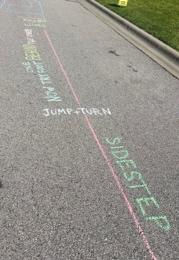Tennis Elbow
- All Care Therapies

- Jan 6, 2022
- 3 min read

Tennis elbow, known as lateral epicondylitis, is a relatively common condition affecting athletes and common folk of all ages. This condition tends to affect the elbow and arm, causing pain and discomfort with continued use. How does one acknowledge, prevent, and treat a relatively common phenomenon?
Given the nature of most humans to be sedentary, these individuals aren’t moving enough to keep their joints and muscles functioning in an optimal capacity. Similar to a car being left in a shed for decades: You may be able to start it up but most likely it will either need repairs or something will break.
Sedentary individuals are often of the sort who work all day at office jobs and play once in a blue moon. This inadequate switch of spending the majority of time in sedentary positions to an all-out performance is highly inefficient, causing muscle overuse which can often result in injury and inflammation.
Initial pain management for this condition involves utilizing RICE (Rest, Ice, Compression, Elevation). This will reduce swelling and give the muscles and attachments an opportunity to recover. Another effective way for short-term pain management is through the usage of stretches and isometric exercises (exercises where the muscle is working but the limbs aren’t moving like pushing on a wall).

Rubber Band Finger Stretch: Bring your fingers to your thumb and place a rubber band around them. Slowly spread your fingers and thumb apart then bring them together again. Repeat 10 times for 3 sets.

Wrist Flexor Stretch: Hold your arm out straight with palm facing up. Use the other hand to grasp your fingers and push them down towards the floor. You should feel a stretch in the inner forearm. Hold for 15 seconds and perform 3-5 times.

Wrist Extensor Stretch: Same as the above stretch except that your palm faces down while you grasp the wrist and bend it towards the floor.

Forearm Extension Holds: Perform 6 times with 30-45 second holds. This exercise can be done any time there is pain. All you need is a simple resistance band tied to a doorknob and wrapped around your wrist. Keep your arm down with your palm and inner elbow facing forward as you move backwards to increase the tension.
When the pain and swelling has reduced considerably, additional exercises can be added to provide a more permanent relief while strengthening the muscles and their attachments. Eccentric exercises (exercises where you slowly de-activate the muscle e.g. slowly lowering a dumbbell after performing a biceps curl) are great at conditioning.
Push-up Eccentrics: Start in the final position of a push up and slowly bring yourself to the floor. Your elbows should be against the sides of your body. This can be done against a wall or on the floor, depending on your strength level. Count to 5 seconds as you bring yourself down. Perform this exercise 6 times.
Wrist Curl Eccentrics: Hold a 1-lb dumbbell and place your hand over the edge of your thigh or table. With your palm facing down as your hold the dumbbell, use your other hand to bend your wrist up. Now, without assistance of your other hand, slowly unbend your wrist. Perform 10 times for 3 sets.
When the pain and discomfort of performing the eccentric exercise has faded away, one can move onto concentric activities (muscle activation that results in movement of the limb).
Forearm Strengthening: hold one end of a 1-lb dumbbell, hammer, or wrench and sit somewhere comfortable. Rest your forearm on your thigh or edge of table and slowly rotate your arm, bringing the item to either side of your arm. Repeat 10 times for 3 sets.
Forearm Curls: While holding a dumbbell or the end of a resistance band, perform an elbow curl with slow and controlled motion. Perform 3 sets of 10 repetitions.
Performing these exercises are most likely to offer symptom relief given that they are performed frequently and carefully. Slow movements with motion control is critical as to help the muscles and attachments become used to this type of loading. We hope that this guide can provide some relief in the event of tennis elbow. Note that this information is not a substitute for a thorough evaluation and exercise prescription from a licensed physical therapist.




Comments